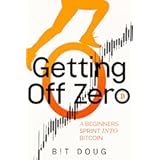Have you ever wondered what truly drives the biggest shifts in financial markets, especially within the fast-paced world of cryptocurrency? As the insightful Raoul Pal recently elaborated, the landscape for the upcoming **2025 crypto bull run** has profoundly changed, placing Ethereum firmly at the center of institutional attention. In the accompanying video, Raoul Pal, a renowned macroeconomic expert, shares his updated, significantly more bullish outlook on Ethereum, highlighting key factors that are setting it apart.
This evolving perspective from a respected figure like Pal is not merely an opinion; it stems from a careful observation of market mechanics, institutional behavior, and the fundamental properties of Ethereum. Indeed, his shift echoes a growing sentiment that Ethereum is positioning itself as the foundational layer for the financial system of tomorrow, making it a compelling asset as we head towards the next major market cycle.
Ethereum’s Ascendancy: The “Safe Choice” for Institutions
Why has Raoul Pal, who once diversified into faster chains, returned to a core conviction about Ethereum? Fundamentally, his renewed bullishness revolves around Ethereum becoming the “blessed” platform for the financial establishment. Institutions, unlike individual investors, operate with layers of risk assessment and career considerations. Selecting a blockchain technology to build upon involves a critical evaluation of its longevity, security, and proven track record.
Consequently, Ethereum’s established presence and its journey through multiple market cycles provide an unparalleled level of confidence. As Pal noted, a JPMorgan executive choosing to build on Ethereum faces a low probability of being fired for that decision. This concept is powerful: the safer a choice appears, the more likely others are to follow suit, leading to a self-reinforcing cycle of adoption. This phenomenon, often referred to as a network effect, ensures that early institutional adopters pave the way for a cascade of subsequent integration, making Ethereum a cornerstone for the 2025 crypto bull run.
The Lindy Effect and Battle-Tested Security
Furthermore, the “Lindy effect” plays a significant role in Ethereum’s institutional appeal. This principle suggests that the longer a technology or idea has survived, the longer it is likely to continue to survive. Ethereum has endured numerous booms, busts, significant protocol upgrades (like the Merge), and intense scrutiny, yet it continues to stand resiliently. Each passing year adds to its credibility, reinforcing trust among cautious financial entities. Its battle-tested nature proves its robustness, particularly concerning the security of its smart contracts—a critical feature for handling high-value agreements.
Think of it as choosing between a newly constructed side street and a well-established, multi-lane highway. While side streets might offer faster initial routes for small trips, the highway is built for heavy cargo, sustained traffic, and crucial journeys. Ethereum represents that highway for the digital economy; it is where the most significant and valuable agreements are confidently locked in, providing the necessary infrastructure for a burgeoning digital financial system.
The Mechanics Behind Ethereum’s Value: Supply and Demand Dynamics
Understanding the fundamental mechanics of Ethereum’s supply is crucial to grasping its long-term investment potential. Unlike Bitcoin, which has a fixed supply, Ethereum’s supply moves dynamically based on two opposing forces: new coins are issued as rewards to those who secure the network, while a portion of every transaction fee is permanently “burned,” or destroyed. Imagine a water tank: new water flows in from a tap, but a drain also lets water out.
When the drain is stronger than the tap, the total supply of Ethereum shrinks. This phenomenon has proven to be a powerful catalyst for price appreciation in the past. For instance, from October 2022 to March 2024, periods of shrinking ETH supply coincided with a remarkable price surge, moving from approximately $1,100 to nearly $4,000—a substantial 260% increase. This direct correlation demonstrates that when supply tightens while demand grows, the price inevitably responds aggressively, creating fertile ground for the **2025 crypto bull run**.
The Impact of Stablecoins and Real-World Usage
A significant driver of Ethereum’s burning mechanism is the increasing activity on its network, particularly related to stablecoins. Stablecoins, which are digital currencies pegged to fiat currencies like the US dollar, conduct a large chunk of their transactions on Ethereum. More real-world transactions translate directly into more fees, and consequently, more Ethereum being destroyed. Recent weeks have witnessed Ethereum transaction levels pushing to some of the highest recorded, partly fueled by clearer regulatory frameworks around dollar stablecoins, such as those emerging from the Genius Act.
This surge in practical usage is precisely the kind of activity that strengthens the “drain” in our water tank analogy. As more value settles on Ethereum, more ETH is burned, driving down the available supply. With new coin issuance stabilizing, this increased burning activity is poised to flip the supply dynamic from growing to shrinking, signaling a potentially rapid repricing for Ethereum. This fundamental shift underscores why Raoul Pal anticipates a robust performance for Ethereum during the next market cycle.
Real-World Evidence: Money Flows and Corporate Treasuries Aligning with Raoul Pal’s Prediction
Raoul Pal’s insights are not merely theoretical; they are manifesting in quantifiable market data. Observing money flows provides concrete evidence that institutions are indeed “blessing” Ethereum. For example, Ethereum ETF inflows have recently turned decisively positive, with products taking in approximately $182 million in a single day on October 6th, marking the sixth consecutive day of net inflows. Cumulatively, net inflows into US spot ETH products reached around $15.0 billion as of October 7th, showcasing sustained investor interest despite prior market volatility.
Furthermore, Wall Street is beginning to adjust its outlook. Citi Group, for instance, raised its Ethereum price target, explicitly predicting a climb to $5,440. This revised forecast directly cites increased fund inflows and growing digital treasury demand, signaling a strategic realignment with Ethereum’s potential. Such institutional endorsements translate into tangible market momentum, setting the stage for a significant **2025 crypto bull run**.
Corporate Balance Sheets Embrace Ethereum
Beyond traditional funds, corporations are also increasingly adding Ethereum to their balance sheets. BitMine Immersion, led by prominent figure Tom Lee, recently acquired roughly $821 million worth of Ethereum, bringing their total holdings to over 2.83 million ETH. This makes them, by far, the largest corporate ETH treasury. They are not an isolated case; Ethereum treasury companies collectively now hold just under 4 million Ethereum, demonstrating a widespread strategic move to accumulate this digital asset.
This dual trend—money pouring into regulated Ethereum products and companies actively taking coins off the market—creates a powerful supply shock. Less available supply combined with rising demand can only propel prices in one direction. This dynamic perfectly encapsulates what Raoul Pal means when he asserts that the “system is blessing Ethereum,” and the numbers unequivocally support his conviction for the forthcoming **2025 crypto bull run**.
Why Ethereum Outshines Traditional Assets: A Digital Property Perspective
Raoul Pal’s bullish stance on Ethereum is further illuminated by his comparative analysis with traditional investments, notably real estate. He candidly shares his personal experience as a property owner, describing real estate as a “sucking of costs and time.” The constant need for repairs, the hassle of managing tenants, the risks of property damage, and the ongoing mortgage payments collectively represent a significant burden. Moreover, unforeseen economic shifts, like the rise of remote work impacting commercial property values, highlight the inherent vulnerabilities and lack of liquidity in real estate.
In stark contrast, digital assets like Ethereum offer a different paradigm. As a form of “digital property,” Ethereum provides exposure to a rapidly expanding network economy without the physical headaches. While a traditional property might struggle to generate returns that consistently beat 50%, 100%, or even 145% annually, certain crypto assets have demonstrated such explosive growth. This comparison underscores the allure of owning a piece of the digital infrastructure rather than a physical asset fraught with operational complexities.
Leveraging Macro Trends: De-basement and AI
Pal emphasizes that the macroeconomic environment further favors digital assets. He points to the ongoing de-basement of currency by governments globally, primarily to manage national debt burdens. This process inherently reduces the purchasing power of fiat currencies, making scarce, decentralized assets like Ethereum more attractive as a hedge against inflation. Furthermore, the burgeoning field of Artificial Intelligence (AI) is anticipated to drive demand for crypto, particularly for computing power and energy payments within decentralized networks. Therefore, investing in Ethereum is not just betting on a technology; it is investing in a strategic hedge against broad economic forces and an accelerator of technological progress.
This perspective encourages investors to shift focus from asset management towards income generation. By investing in resilient digital assets and technology stocks, individuals can free up time and energy to concentrate on growing their primary income streams or pursuing passions, while their investments work harder for them in the background. It is about aligning one’s portfolio with the accelerating trends that are shaping our collective future, particularly as we look towards the transformative potential of the **2025 crypto bull run**.
The Snowball Effect: Ethereum’s Self-Reinforcing Cycle for the 2025 Crypto Bull Run
Ultimately, Raoul Pal’s renewed bullish view on Ethereum stems from observing a powerful, self-reinforcing cycle. When institutions perceive Ethereum as a “safer choice,” they are more likely to adopt it. This increased adoption then strengthens Ethereum’s fundamentals: its network activity grows, its security is further validated through real-world usage, and its ecosystem expands. Consequently, these stronger fundamentals lead to enhanced market performance, attracting even more institutional and retail investors who do not wish to be late to the opportunity.
This loop — where a safer choice leads to more adoption, which in turn leads to stronger fundamentals and better performance — continually amplifies Ethereum’s position. As more of the financial world settles high-value agreements on Ethereum, network usage surges, transaction fees rise, and more Ethereum gets burned. With new coin issuance remaining steady, this accelerated burning directly leads to supply tightening, exerting upward pressure on the price. This dynamic creates the perfect conditions for a substantial repricing and solidifies Ethereum’s role as a key player in the projected **2025 crypto bull run**.







